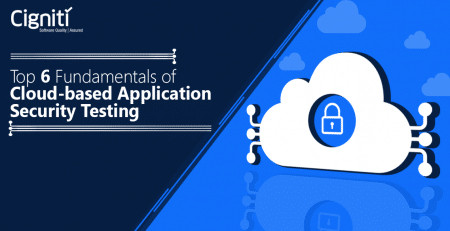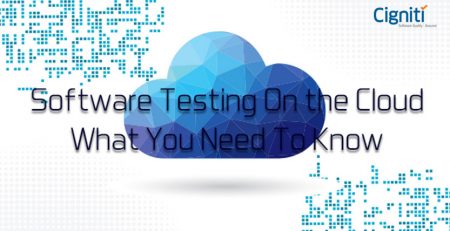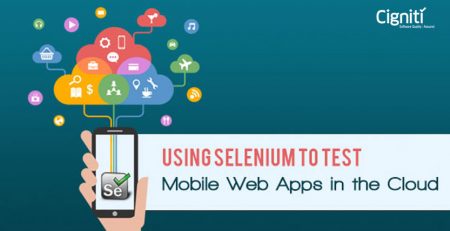Cloud Migration Assurance – COTS Migration Challenges
Assume you’re building a website, an application, or software, and you don’t want to build everything yourself for a variety of reasons – you’re short on time; you don’t want to code the tedious sections, and so on.
So you have the choice of purchasing some elements of the software that you will use in it, such as the login, sign up, and other pages, and here comes the COTS-commercially –off –the –shelf software. This is primarily used in businesses to expedite projects and eliminate overlapping activities.
Companies now utilize seven strategies, or 7Rs – refactor, re-platform, repurchase, rehost, relocate, retain, and retire, to determine which applications should be decommissioned or transferred; this is done on a regular basis to keep the server up to date with the most recent market codes.
Given the wide range of functional and technological intricacies hidden behind a black-box, migrating COTS apps to the cloud is not an easy task.
COTS Cloud Migration Challenges
While most large product suppliers provide cloud-based solutions, switching to the most recent cloud product suite requires a significant amount of effort for clients who are still using earlier versions.
On the contrary, many products are still not cloud-approved, and several industrial sectors have begun shifting workloads to the cloud.
While waiting for certified cloud solutions may be an option, it is also critical for clients to consider working with COTS suppliers and Systems Integration partners and begin their COTS migration journey to stay ahead of the competition.
The following are some of the challenges associated with transferring COTS applications to the cloud:
- It’s complicated to migrate products with license and hardware dependencies.
- Latency concerns with real-time interfaces to on-premises systems have been reported in migrated products.
- Products that are currently running on legacy platforms and have not yet been validated by the vendor for use on the target cloud platform.
- Cloud migration is not possible for products that use shared storage and multicast.
When transferring COTS workloads to the cloud, some major factors include considering SaaS solutions if the firm wants to avoid future maintenance costs and the application data classification and availability criteria are at the level expected from a SaaS vendor.
It is also advisable to rehost first to the cloud before attempting to re-platform. When support for the original product’s OS/application runtimes/database is not available, and non-functional needs are not met, re-platforming of COTS is required. If your application provider supports open-source databases, you can save money on licensing.
Key Drivers for Enterprises Migrating COTS to the Cloud
With fierce competition from enterprises and increased cloud adoption across the industries, it’s past time to rethink the COTS portfolio approach to future-proof the growing business needs while lowering overheads.
COTS apps, on the other hand, have their own set of issues when it comes to cloud migration. A standard R path analysis will not suffice to define the COTS cloud adoption journey.
Enterprises are shifting COTS to the cloud for a variety of reasons:
- to boost company agility by automating provisioning and ensuring continuous integration
- Using the elasticity and scalability of the cloud platform, reduce capital investment in infrastructure and license costs while increasing processing capacity.
- End-of-Support issues for COTS products and their underlying technology
- to talk about datacenter consolidation and departure strategies
- to cut maintenance costs by reducing the number of tools and personnel needed to manage complicated situations
- Using cloud services for logging, monitoring, and scalability to improve resiliency
COTS product migration is typically accomplished in four stages:
Assess: Examine product installation, configuration details, infrastructure, security, and data needs, as well as application compatibility (interfaces, shared middleware & data storage)
Design: Identify compatible cloud services, components, and target architecture blueprints for each of the application, data, and integration layers, as well as the required migration tools and processes to complete migration and infrastructure capacity and availability requirements.
Migrate: Execute agile-based migrations according to design specifications, starting with data, integrating with on-premise systems, and performing end-to-end testing, including performance and security testing, in a non-production environment first to assure minimal functional impact.
Optimise: Continuously calibrate cloud service configurations to optimize COTS resources according to business requirements.
Furthermore, the following can assist enterprises in maximizing the commercial value of shifting COTS workloads to the cloud:
- automating cloud infrastructure provisioning and teardown based on demand using Infrastructure-as-Code
- automating operational processes to produce systems that auto-scale and self-heal
- using agile development practices such as DevOps, Test automation, and CI/CD
- Cloud-native architectural patterns adoption — stateless, microservices, and serverless
- Wherever possible, replacing licensed software with open-source software
While enterprises can reap maximum benefits by migrating their COTS apps to the cloud, it is imperative to have a Cloud Migration Assurance in place.
Cloud Migration Assurance – How Does it Matter?
Many enterprises have found that migrating to the cloud has been a transformative step, but it is complex and involves risks to applications unless rigorous end-to-end, cloud-specific testing is undertaken.
Enterprises confine their testing strategy to application level regression analysis, which is insufficient to assure that apps, data, and servers are completely functional and secure following migration.
Be it the COTS apps or any other digital applications, a comprehensive assurance strategy to incorporate cloud-centric validation techniques is essential in light of the different ways cloud leveraging has grown.
For example, if the servers are not properly sized, if there are network latency issues that were not tested in isolation, or if there are dependencies with other apps that were not tested end-to-end in the cloud, application performance difficulties can often appear.
As a result, businesses that migrate to the cloud without a robust cloud testing plan risk exposing their applications to dangers such as server failure and application crashes.
It’s critical to develop a strategy that considers all major cloud-readiness features, not just functionality, performance, security, and user experience, to help businesses get the most out of the cloud.
A minimum of three rounds of testing is recommended as part of cloud migration assurance to provide full coverage:
Round 1: Pre-migration testing comprises baseline testing in existing facilities and the recording of application/server performance benchmarks.
Round 2: Post-migration testing includes validating the server configuration against the architecture and running end-to-end tests against the cloud apps, including functional, web services, integration, performance, security, regression, DR, and failover.
Round 3: Cut-over and go-live certification comprises cut-over planning, go-live testing and monitoring in the production environment, as well as decommissioning the environment.
The goal is to obtain the highest level of automation feasible to speed up the migration process and assure complete test coverage for apps to run smoothly in the cloud.
Conclusion
Traditional testing methodologies are insufficient to ensure business readiness while migrating to the cloud.
Enterprises must adjust their test approach based on the cloud migration methodology used to ensure correct and full validation. A structured strategy is advocated for end-to-end validation that can be hastened using tools and automation.
Most enterprises are still a few steps away from realizing the cloud’s entire potential, where the sky is the limit.
At Cigniti, we help you provide fast, secure, and smooth cloud migration assurance (CMA) services for mainstream applications with certified cloud professionals. A deep understanding of large-scale migration projects allows Cigniti to propose an optimal test strategy based on the migration methodologies being followed.
Our CMA services help you with:
Cost optimization – Right sizing of computing resources and IT infrastructure costs & conversion of capital expenditure into operational expenses
Security – Modernization of IT infrastructure according to best practices and greater application security
Accessibility and convenience – Central location of applications and services with easy and uninterrupted access & improved collaboration among teams
Leverage new technologies – Leveraging complex cloud friendly applications and services across AI/ML, data analytics, data lakes etc.
Disaster recovery – Remote access to systems in a secure virtual environment that leads to a quicker recovery of critical systems in the event of a disaster
Need help? Schedule a discussion with our Cloud Migration Assurance experts to learn more about the challenges involved in COTS migration and why cloud assurance matters.





Leave a Reply